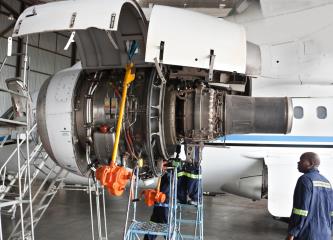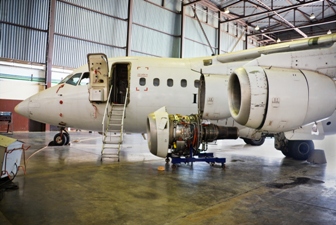Summary
Please enable javascript to play this video.
| Quick Facts: Aircraft and Avionics Equipment Mechanics and Technicians | |
|---|---|
|
$75,400 per year
$36.25 per hour |
|
| Postsecondary nondegree award | |
| None | |
| None | |
| 163,300 | |
| 5% (As fast as average) | |
| 8,900 | |
What Aircraft and Avionics Equipment Mechanics and Technicians Do
Aircraft and avionics equipment mechanics and technicians install, test, adjust, and repair equipment and systems in aircraft.
Work Environment
Aircraft and avionics equipment mechanics and technicians work in hangars, in repair stations, or on airfields. The environment may be loud because of aircraft engines and equipment.
How to Become an Aircraft and Avionics Equipment Mechanic or Technician
Aircraft and avionics equipment mechanics and technicians typically need postsecondary education, such as a certificate from a Federal Aviation Administration (FAA)-approved program. Some enter the occupation with an associate’s degree; others have a high school diploma and train on the job or in the military.
Pay
The median annual wage for aircraft mechanics and service technicians was $75,020 in May 2023.
The median annual wage for avionics technicians was $77,420 in May 2023.
Job Outlook
Overall employment of aircraft and avionics equipment mechanics and technicians is projected to grow 5 percent from 2023 to 2033, about as fast as the average for all occupations.
About 13,400 openings for aircraft and avionics equipment mechanics and technicians are projected each year, on average, over the decade. Many of those openings are expected to result from the need to replace workers who transfer to different occupations or exit the labor force, such as to retire.
State & Area Data
Explore resources for employment and wages by state and area for aircraft and avionics equipment mechanics and technicians.
Similar Occupations
Compare the job duties, education, job growth, and pay of aircraft and avionics equipment mechanics and technicians with similar occupations.
More Information, Including Links to O*NET
Learn more about aircraft and avionics equipment mechanics and technicians by visiting additional resources, including O*NET, a source on key characteristics of workers and occupations.
 United States Department of Labor
United States Department of Labor












